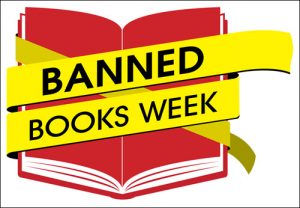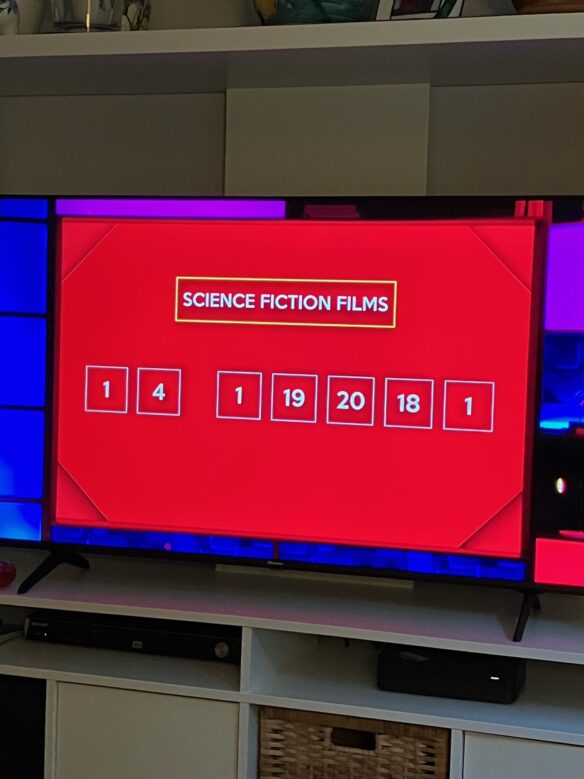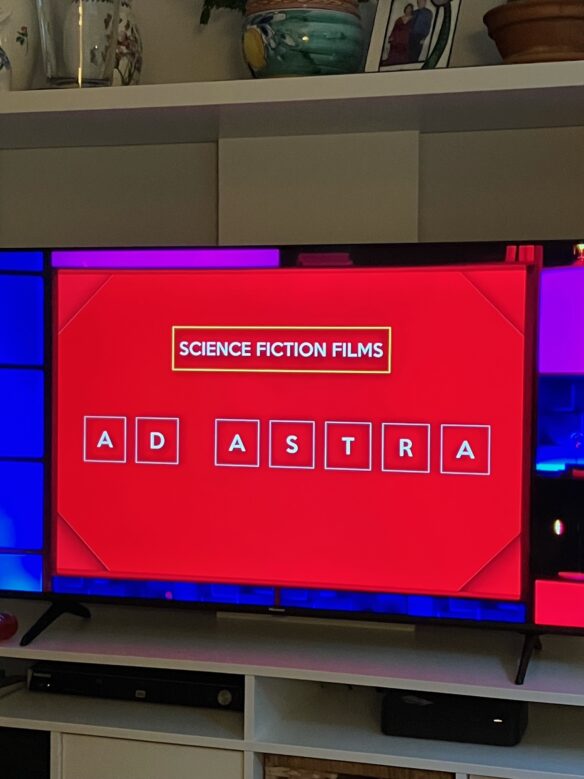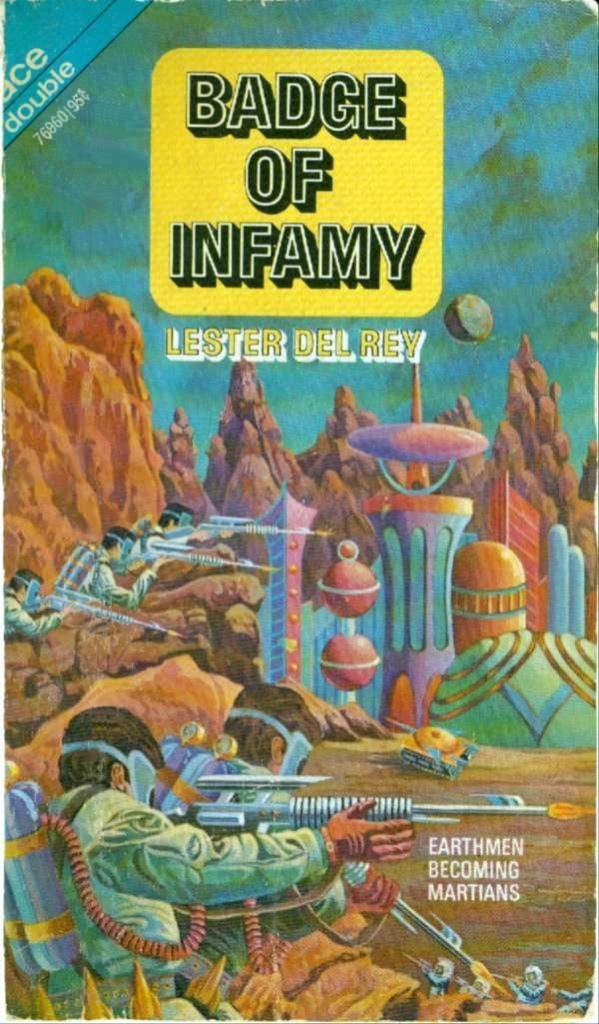(1) MAKING IT UP. Sarah Gailey interviews the authors and editors of The Worst Ronin in “Middle Finger To the Sky: The Worst Ronin by Maggie Tokuda-Hall and Faith Schaffer” at Stone Soup.
Gailey: What did you get to do here that you might not have gotten to do if this book landed elsewhere?
Tokuda-Hall: [The Worst Ronin] was largely written with a middle finger to the sky–when POC are invited to the table to tell our stories, there are usually so many caveats. Yes, we want your story but we want it to be about your marginalization. Or, yes, tell your story, but we want it to be edifying about your culture. There’s this demand that we serve the white gaze, and not a respect for our boundless imaginations. We want to make up shit, too. And so I very stridently let the reader know, in many ways, that this book is not there to educate them about anything. This is not historically accurate. This is a work of invention.
Gailey: How did you first dive into the story, knowing you could do whatever you want?
Tokuda-Hall: I took such joy in writing this book. I had a misguided notion at first that I would keep it super wholesome and middle grade, but my brain just doesn’t work that way, and as soon as I accepted that the plot and characters took off and I just felt like I was sprinting to catch up with them. The hardest thing with this book was balancing the humor that is so inherent to the central characters (The Worst Ronin is a buddy comedy, in its heart) with the darkness of the stories they each would face. …
(2) WHITHER STOKERCON 2025? During last night’s Bram Stoker Awards ceremony it was announced that StokerCon 2025 will be held June 12-15 at the Hilton Stamford Hotel in Stamford, Connecticut.
(3) UBIQ. The Society of Illustrators will host “JACK DAVIS: A Centennial Celebration”, an exhibit of work by the famed MAD Magazine cartoonist and commercial illustrator, at its New York location from June 12-September 21. Full details at the link.
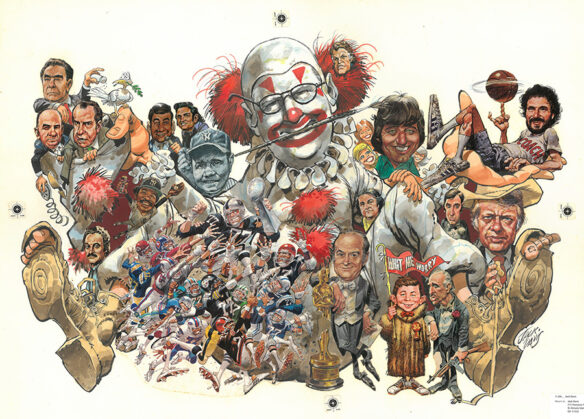
The Society of Illustrators marks the centenary celebration of Jack Davis’ birth by hosting a retrospective featuring the original art from among his most admired works, many for the first time ever. The art on view represents every genre and every phase of Davis’ six-decade career: from EC Comics and Mad Magazine to TV Guide and Time Magazine, from Raid and McDonald’s ads to NASCAR and Super Bowl promotions, from history book illustrations to movie posters….
…“Jack Davis was quite possibly the most ubiquitous American humor illustrator of all time. Davis was a master cartoonist, caricaturist, and illustrator, and his funny, fast-paced, manic, beautifully rendered work has graced the covers of countless comic books, magazines, and record albums and has also appeared on movie posters, bubble gum cards, and advertisements. A virtual mind-boggling one-man industry, Davis has been called “the fastest cartoonist alive” and ‘the master of the crowd scene.’ It’s astonishing to realize that this quiet Southern gentleman was usually finished with assignments for the day and out on the golf course by 2:30 p.m.”
– Drew Friedman from his Fantagraphics book, Heroes of the Comics.
(4) LOSCON 50. Can it be Loscon 50 already? Why, it wasn’t that long ago I missed the first one while I was at grad school….
However, I trust the committee’s count. And here’s the graphic that accompanies their Progress Report #3 on Facebook. Get a full update there.
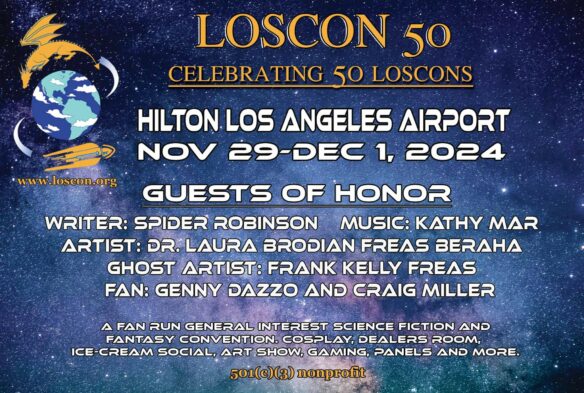
(5) BEFORE YOU CAN READ THE OMENS. Colleen Doran’s Funny Business brings us a “Good Omens Update”, a highly detailed tour of Doran’s techniques for producing art for the book. So much more is involved than I ever guessed.
…I use the construction method of drawing, as you see. This is an old-school technique. Some people seem to assume that artists always use computers and tracing for their drawings, but most cartoonists of my generation work extemporaneously. There’s quite a bit of noodling around and searching in the sketches. Using too much reference often results in stiff, dead work.
In comics, it’s very important to make sure you’ve considered word balloon placement when designing a page. The script for Good Omens is more copy-heavy than most modern comic book scripts because I want to preserve as much of the clever original language as I can….
(6) DIVING INTO NETFLIX. If you’re interested in the latest business statistics on Netflix and its content, JustWatch recently released a page where they provide data and analysis: JustWatch: Netflix Statistics.
Some of the page’s features are content expansion, popularity, subscription prices, its market share, and much more.
(7) FREE READ. Sunday Morning Transport’s stories for June are by authors Kelly Robson, Laura Anne Gilman, Meg Elison, and Yi Sheng Ng. The first story of the month is free to read, but they seek “paying subscribers who allow us to keep publishing great stories week after week.”
In this, June’s first, free, story, Kelly Robson shows us how, at Versailles, getting old is no picnic. But sometimes there are options… “The High Cost of Heat” by Kelly Robson.
(8) USE THE FORCE…OF MEMORY. After all this time can there still be “Facts You Probably Didn’t Know About the Original ‘Star Wars’ Trilogy”? Maariv Periodical challenges you to find out. Their first fact is:
Big Mistake
When it came to signing a contract with James Earl Jones to fill in Darth Vader’s voice, George Lucas offered him a choice: He could take a salary of $7,000 for his work or royalties off the back end of ticket sales. Back then, $7,000 was a decent amount of money, so Jones took the cash, which turned out to be a costly mistake.
Had he chosen the alternative, he would have earned far more; Jones admitted years later that the decision cost him “tens of millions of dollars.” In comparison, Sir Alec Guinness took the royalties – and his heirs have earned an estimated $95 million for his work in the first “Star Wars” film.
(9) TODAY’S BIRTHDAY DOUBLE FEATURE.
[Compiled by Paul Weimer.]
June 2, 1929 — Norton Juster. (Died 2021.)
By Paul Weimer. Once upon a time when the world was young, a 2nd grade teacher had a reading session with my class. We read a book about a character who had found himself in a land of mathematics and weirdness, of two princesses bound, of paths to infinity and clock-like dogs. It was a wild and magical place and I adored the book to pieces.

The problem is, I had misunderstood the title. I thought the title was “Milo and the Mathemagicians” and did not see or find the book for three decades after that second grade classroom. Some days, I wondered if I had just imagined or hallucinated the existence of this book.
Enter the pre-LLM internet. It was the mid 2000’s and I got the urge to try and find some books of my youth among dome other things. And in that time, the Internet was at its peak for finding information that you wanted. SEOs were not yet a thing. Amazon was not full of crap. Websites still proliferated. And I had great success. I managed to find a copy of an old liberal arts college math textbook that, decades ago, had introduced me to Escher and other wondrous things. (Oddly, it was just called The Math Book) I found some old SF anthologies I had not seen for years. I hit upon authors and musicians and others I had dimly remembered from my youth. It was a great time for me for rediscovery.
And then there was Milo. I was throwing search terms in one day trying to find “Milo and the Mathemagicians”, and somehow managed to hit The Phantom Tollbooth. I read the description and thought “Is this it?” I bought a copy and with anxious anticipation, I started reading it. Did you ever have that feeling, wondering if the book you are reading is something that is going to be that good, or live up to the suck fairy? I had that feeling re-reading The Phantom Tollbooth.
Imagine my utter happiness when I delved into the book and found, to my delight, that it WAS the book I had remembered from that second grade class. And all of the joys in the book, the wordplay, the characters, the concepts (how many children’s books try and explain *infinity*) and the absolute heart of the book. And the artwork and drawings. I had not remembered specific drawings from the second grade class, but I had remembered the book WAS illustrated. And the illustrations are wonderful!
I don’t regret seeking out the TV movie that was made, subsequently, it doesn’t quite work for me, but I can see why it was made.
But speaking of movies, the other Juster property I adored that I did not realize at the time WAS Norton Juster was the Academy Award winning short film The Dot and the Line. I had seen it way back when I had read Flatland, and loved it, but had no idea that it had anything to do with The Phantom Tollbooth. Imagine my delightful surprise when I found out it was based on a Juster book. I think, given its dynamism, that the short movie is better than the actual book and I do recommend that fans of The Phantom Tollbooth go seek it out.
I’ve now, including the second grade class, read The Phantom Tollbooth four times. And I look forward to it again. And I really need to rewatch The Dot and the Line myself. Don’t jump to the island of conclusions that The Phantom Tollbooth is for children alone. It works for readers of all ages. If you have any interest in wordplay, mathematics or whimsy, pick it up and give it a spin.
Born June 2, 1915 — Lester Del Rey. (Died 1993.)
By Paul Weimer. For me, first and foremost, Lester Del Rey was a publisher and an editor. Many of the books I first encountered reading science fiction, back 4 decades ago, were published by Del Rey, which he founded with his wife Judy Lynn Del Rey. And for a good while, that’s all I thought that he was (although his legacy and influence as a publisher is huge).
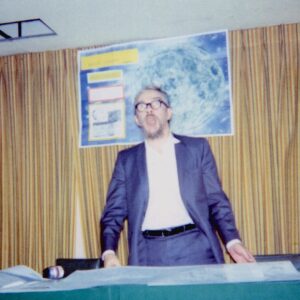
The Science Fiction Hall of Fame anthology was a gateway to a number of authors for me. Theodore Sturgeon. Murray Leinster. Fritz Leiber (for “Coming Attraction”, although I would soon discover Fafhrd and the Grey Mouser). And Lester Del Rey, for “Helen O’Loy”. I had read enough Greek Mythology by that point to get the idea that this was a Helen of Troy story, and it was perhaps the first story I read where a robot was an object of romantic interest. Helen’s story, and the tragedy of it moved me deeply.
I soon came across other Del Rey stories, here and there, randomly, sprinkled in best of collections and favorite science fiction stories and the myriad other SF anthologies that I read in the first decade of my science fiction reading.
But it was Harlan Ellison® who turned me onto perhaps the best and my favorite of the Lester Del Rey stories. In one of his own collections about the relationship between men and Gods, he mentioned a Lester Del Rey story “For I am a Jealous People”. I could see the biblical allusion in the title, and I decided to seek it out.
I recently re-read it, and it still slaps, hard. “For I am a Jealous People” is a kicker of a story, where the Abrahamic God is real, has always been real. But, now, God is angry with humanity and fed up with us, and basically has sided with aliens invading Earth and its possessions. That is a smash to the face to begin with, but it’s humanity response to this revelation in the story that really brings it home to me, the power of a Del Rey story at it’s best. Humanity’s response could have been any number of plausible results. Regret. Sadness. Despair. Resignation. Anger. Del Rey goes for “Good. Bring it!” It’s a muscular answer to the question of what to do when even God is against you, and it remains powerful to this day.
(10) COMICS SECTION.
- Brewster Rockit celebrates the Deep Space Network.
- Carpet Diem introduces a very careful driver.
- The Other Coast stops an invasion.
- Bizarro updates a fairy tale’s nutritional information.
(11) UPDATES TO THE BLOCH WEBSITE. Jim Nemeth, curator of the Robert Bloch Official Website announced three new additions.
1) Bill Gillard, an English professor at the University of Wisconsin Oshkosh, recounts his recent travel to Laramie, Wyoming, to research the Bloch papers/archives collection, housed at the University of Wyoming. With photos! Read: Robert Bloch Papers
2) Matthew R. Bradley’s interview of Bloch; from Filmfax magazine (Aug/Sep 1993) Read: Heart of a Small Boy.
3) See Bob’s military draft card. See Gallery page.
(12) SPACE, THE FINAL EPISODE. Camestros Felapton has closing remarks on the conclusion of a Star Trek series: “Farewell Star Trek Discovery”.
….Notably, this season had the best attempt yet at marrying the idea of single season long story with Star Trek’s more traditional episode-long stories. The basic plot idea (a quest for a series of clues leading to a hidden secret treasure) was not terribly original but it was enough of a hook to ensure each episode could have its own sub-story while overtly moving the plot along. The broader plot was also well served by the two antagonists who became more interesting as the season progressed….
(13) LEARNING ALL OVER AGAIN. “How NASA astronauts are training to walk on the Moon in 2026” in Nature.
NASA astronaut Kate Rubins was having a hard time seeing in the eerie twilight of the Moon’s south pole this month.
Rubins made her way carefully through the deep shadows on the lunar surface, her path dimly lit by lights on her spacesuit’s helmet. She was hunting through the volcanic landscape for geological treasure — Moon rocks that she could pick up and bring back to Earth, which would reveal secrets of this frozen world. As the first person to set foot on the Moon in more than half a century, Rubins was making good progress on her historic foray — despite the piles of cow manure along the way.
The rock-strewn plain wasn’t really the Moon but was, in fact, the high desert of northern Arizona. Rubins and astronaut Andre Douglas were participating in the biggest dress rehearsal yet for the next time NASA plans to send people to the Moon’s surface, a mission known as Artemis III. If all goes to plan, Rubins or one of her colleagues will be stepping onto the actual Moon a little over two years from now. So NASA is training its astronauts to make the most of their precious time there — given that no human has set foot on the lunar surface since the last Apollo crew blasted off in 1972….
(14) PIGS NOT IN SPACE. Slashfilm discusses Georges Méliès A Trip to the Moon and a little-known predecessor in “This 14-Minute Short Isn’t The First Sci-Film, But It Came Close”.
…But “A Trip to the Moon” wasn’t the first sci-fi film. Indeed, it wasn’t even Méliès’ first sci-fi film.
If one is to trust the Aurum Film Encyclopedia, the first sci-fi film ever was “The Mechanical Butcher,” a short made by the Lumière Brothers in 1895. The Lumières, as all first-year film students know, invented the Cinématographe motion picture system, one of the earliest motion picture cameras, making them among the very first filmmakers. “The Mechanical Butcher” is only 53 seconds long, and depicts butcher characters lifting a pig into a futuristic machine and extracting it as prepared pork products. Mechanized slaughterhouses were relatively new in 1895, and the Lumières made a short depicting the absurdity of sped-up, high-tech meat manufacture. Why, only a moment ago, these pork chops were alive! If sci-fi is a genre that analyzes technology’s effects on human development — techno-anthropology — then “The Mechanical Butcher” certainly counts….
[Thanks to Mike Kennedy, Andrew Porter, John King Tarpinian, Paul Weimer, Rich Lynch, Chris Barkley, Cat Eldridge, SF Concatenation’s Jonathan Cowie, Steven French, Teddy Harvia, and Kathy Sullivan for some of these stories. Title credit belongs to File 770 contributing editor of the day Cat Eldridge.]

